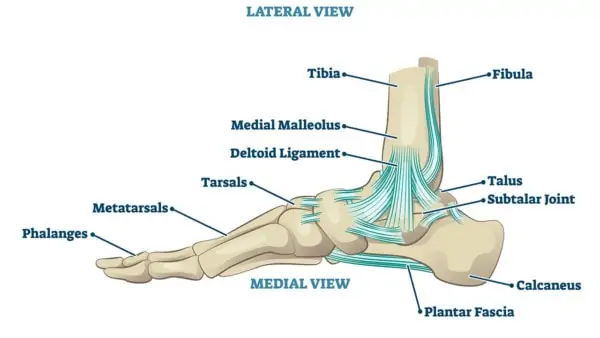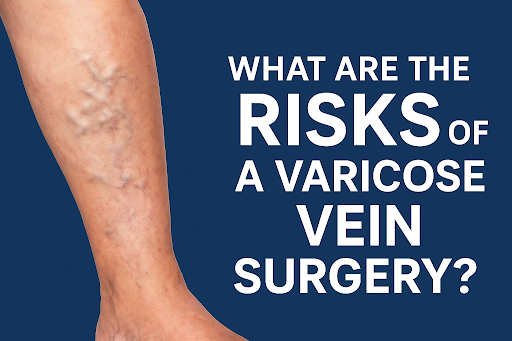Table of Contents
Introduction
While most of us have heard of outside ankle sprains, did you know that problems can also occur with the inside ankle ligaments? This condition is known as a deltoid ligament injury, and in this article, we’ll explore what it is and how to treat it without the need for surgery.
What is the Deltoid Ligament?
Your ankle is held together by ligaments, both on the outside and the inside. The ones on the inside are called the deltoid ligaments. Think of them as the adhesive tape that keeps your inner ankle bones in place. The deltoid ligament is comprised of three parts: the back, middle, and front sections. This ligament, along with others, provides stability to the ankle joint, including the main articulation (tibiotalar) and the joint below it (called subtalar).
Understanding Deltoid Ligament Sprains
A sprain occurs when a ligament is stretched and injured. Deltoid ligament sprains are classified into different grades, ranging from the least severe (grade I) to the most severe (grade III). The severity of the sprain corresponds to the extent of microtears in the ligament.
- Grade I: Mild stretching of the ligament.
- Grade II: Partial tear of the ligament.
- Grade III: Complete rupture of the ligament.
In cases where the deltoid ligament is completely torn, it may either be retracted (the two ends are separated) or non-retracted (the two ends are still connected).
Diagnosing Deltoid Ligament Injuries
A deltoid ligament injury can be assessed through physical examination. This typically involves everting the ankle by pulling it outward, thereby stretching the inside ankle ligaments. Patients experiencing pain in the inside of the ankle during this maneuver may have a deltoid ligament injury.
Various imaging methods can be used to evaluate the extent of deltoid ligament injury:
- MRI (Magnetic Resonance Imaging): Provides detailed images of the ligament.
- Ultrasound: Allows direct visualization of the ligament and its flexibility.
- X-ray: Primarily looks at bone movement and may indicate instability of the ankle joint.
Treatment Options
Non-Surgical Treatments
For most deltoid ligament injuries, conservative treatment options are recommended:
- Rest and Immobilization: Resting the affected ankle and using bracing can promote healing and is effective for grade I and some grade II sprains.
- Injections for Healing: In cases of partial tears or complete non-retracted tears, injections can stimulate the body’s natural healing process. Options include:
- Prolotherapy: Promotes an inflammatory healing reaction.
- Platelet-Rich Plasma (PRP): Uses the body’s concentrated platelets with healing growth factors.
- Bone Marrow Concentrate: Isolates and concentrates stem cells to aid in the healing process.
Surgical Intervention
In the rare case of a complete retracted tear of the deltoid ligament, surgical repair may be necessary. This procedure typically involves removing the damaged ligament and using a tendon to replace it. This tendon is threaded through holes drilled in the bone. However, it’s important to note that this replacement will not function exactly like the original ligament.
Rehabilitation and Recovery
Recovery from a deltoid ligament injury depends on the severity of the injury and the chosen treatment method. Physical therapy and exercises to strengthen the ankle are often part of the rehabilitation process. It’s essential to follow your healthcare provider’s guidance for a safe and successful recovery.
Preventing Deltoid Ligament Injuries
Prevention is always better than cure. To reduce the risk of deltoid ligament injuries, it’s crucial to:
- Maintain proper ankle strength and flexibility.
- Wear appropriate footwear for support and stability.
- Be cautious during physical activities to avoid overstretching the ankle ligaments.
Conclusion
Deltoid ligament injuries, although less common than outside ankle sprains, can significantly impact your daily life. Whether treated conservatively or through surgical means, the goal is to restore ankle stability and function. By following the recommended treatment options, patients can experience a successful recovery.
In this article, we’ve explored deltoid ligament injuries, their causes, diagnosis, and treatment options. By understanding this condition, you can take steps to protect and heal your deltoid ligament, ensuring a healthier, more active life.
FAQs
1. Can deltoid ligament injuries heal without surgery?
In many cases, deltoid ligament injuries can heal without surgery, especially if the injury is mild to moderate. Non-surgical treatments such as rest, bracing, and injections can be effective in promoting healing.
2. How long does it take to recover from a deltoid ligament injury?
Recovery time varies depending on the severity of the injury and the chosen treatment method. Milder cases may recover in a few weeks, while more severe injuries may take several months.
3. What are the risk factors for deltoid ligament injuries?
Risk factors for deltoid ligament injuries include participating in activities that involve frequent ankle stress, wearing improper footwear, and having a history of ankle injuries.
4. Are there any exercises to strengthen the deltoid ligament?
Yes, there are exercises to strengthen the ankle and deltoid ligament. A physical therapist can recommend a personalized exercise program to improve stability and reduce the risk of future injuries.
5. What should I do if I suspect a deltoid ligament injury?
If you suspect a deltoid ligament injury, it’s essential to seek medical attention. A healthcare provider can assess the injury’s severity and recommend an appropriate treatment plan to facilitate your recovery.








